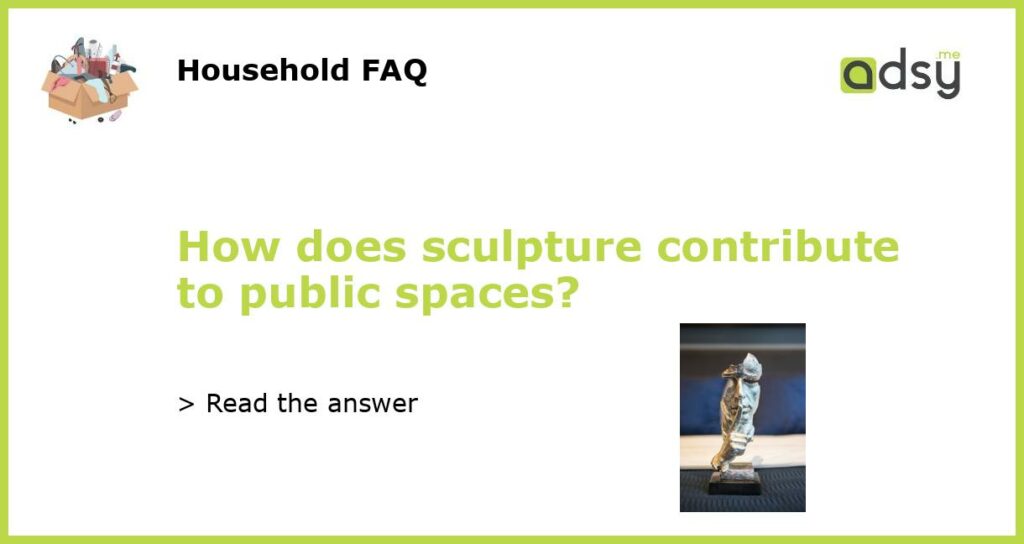Sculpture as a Reflection of Culture
Sculpture has long been a significant form of artistic expression, and when placed in public spaces, it has the power to contribute in various ways. One of the key contributions sculpture makes to public spaces is its ability to reflect and represent the culture of a society. Sculptures often embody the values, beliefs, and traditions of a particular community, making them an integral part of the public space they inhabit.
Whether it is a traditional sculpture that represents historical events or figures, or a contemporary piece that explores modern ideas and themes, sculptures in public spaces offer a tangible and visible representation of the culture in which they exist. They provide an opportunity for people to engage with and explore their cultural heritage, fostering a sense of identity and belonging within the community.
Enhancing the Aesthetics of the Environment
Another significant contribution of sculpture to public spaces is its ability to enhance the aesthetics of the environment. Sculptures have the power to transform mundane and ordinary spaces into visually appealing and captivating places. Their presence adds beauty and charm to the surroundings, creating a more enjoyable and engaging experience for people who interact with the public space.
By incorporating different materials, shapes, colors, and textures, sculptures can create a sense of harmony and balance in the environment. They can complement the existing architecture and landscape, or contrast with it to create an interesting visual juxtaposition. In either case, sculptures have the potential to elevate the overall aesthetic appeal of public spaces, making them more inviting and inspiring for everyone who encounters them.
Providing a Platform for Expression and Dialogue
Sculptures in public spaces also serve as a platform for expression and dialogue. They can act as catalysts for conversations and discussions about a wide range of topics, from social and political issues to environmental concerns. Sculptures often embody powerful narratives and provoke thought, encouraging people to reflect on various aspects of human existence or societal challenges.
Public sculptures can offer a space for individuals to express their opinions and engage in dialogue with others. They can become symbols of protest, celebration, or commemoration, reflecting the collective voice of a community. By sparking conversations and debates, sculptures contribute to a vibrant and dynamic public sphere, allowing diverse perspectives to be acknowledged and shared.
Cultivating a Sense of Place and Identity
Sculpture also plays a crucial role in cultivating a sense of place and identity within public spaces. When a sculpture becomes synonymous with a particular location, it becomes a landmark and an emblem of the community’s identity. It creates a unique identity for the public space, distinguishing it from other places and giving it a sense of character and personality.
Public sculptures often become iconic symbols that are associated with the history, traditions, and values of a particular place. People become emotionally attached to these sculptures, seeing them as integral parts of their community and shared heritage. As a result, sculpture contributes to fostering a sense of pride, belonging, and connection to the public spaces they inhabit.
Inviting Interaction and Engagement
Lastly, sculpture in public spaces encourages interaction and engagement from the public. Unlike artworks confined to museums or private collections, public sculptures are accessible to all and invite people to interact with them. Whether it is through touching, sitting, or simply observing, sculptures in public spaces spark curiosity and encourage people to actively engage with their surroundings.
By inviting interaction, sculptures create a more inclusive and participatory environment within public spaces. They stimulate the senses, engage the imagination, and encourage people to stop and appreciate the beauty and significance of the artwork. In this way, sculptures contribute to a more vibrant and interactive public realm, enriching the overall experience of the space for everyone.






